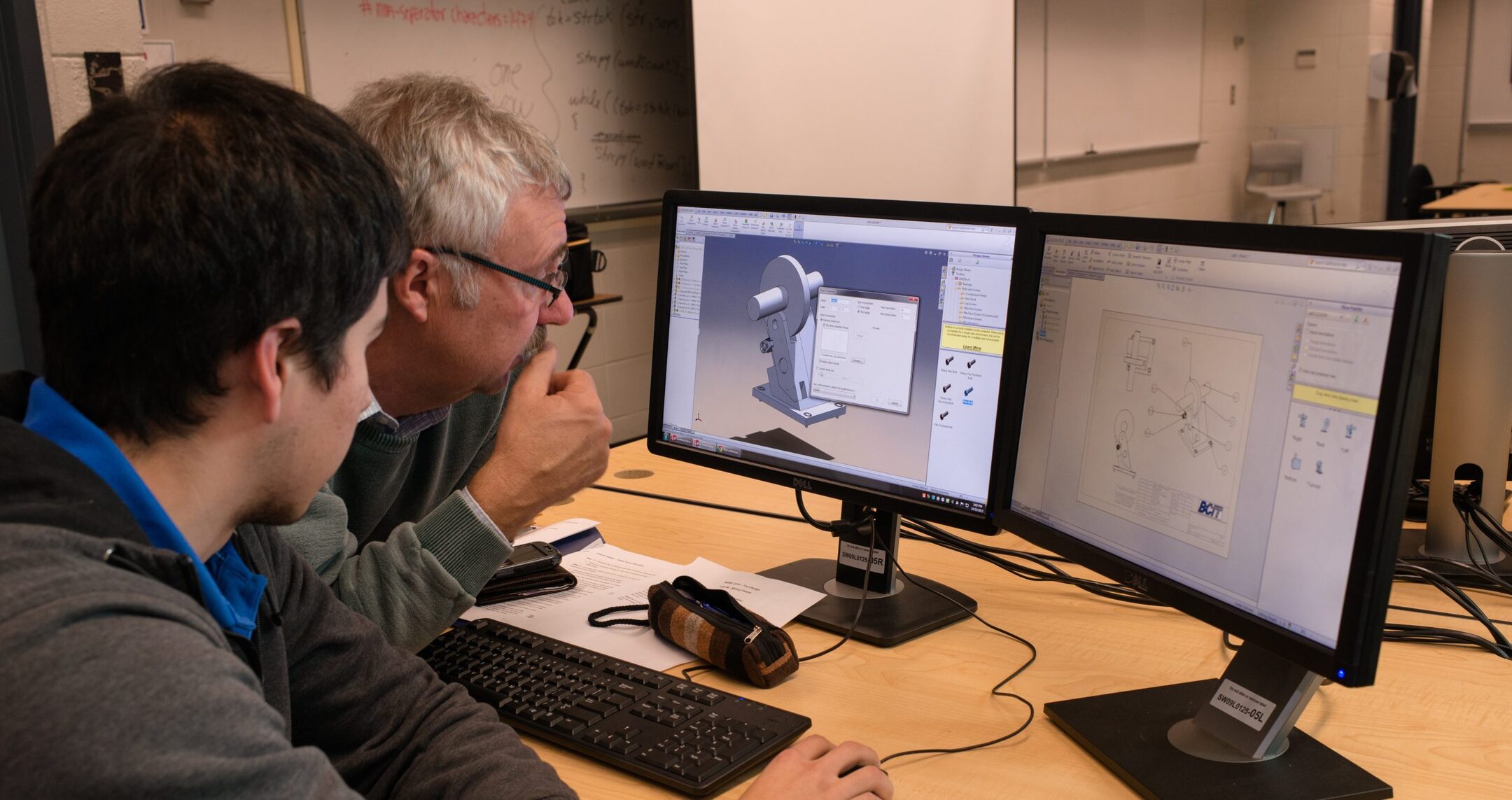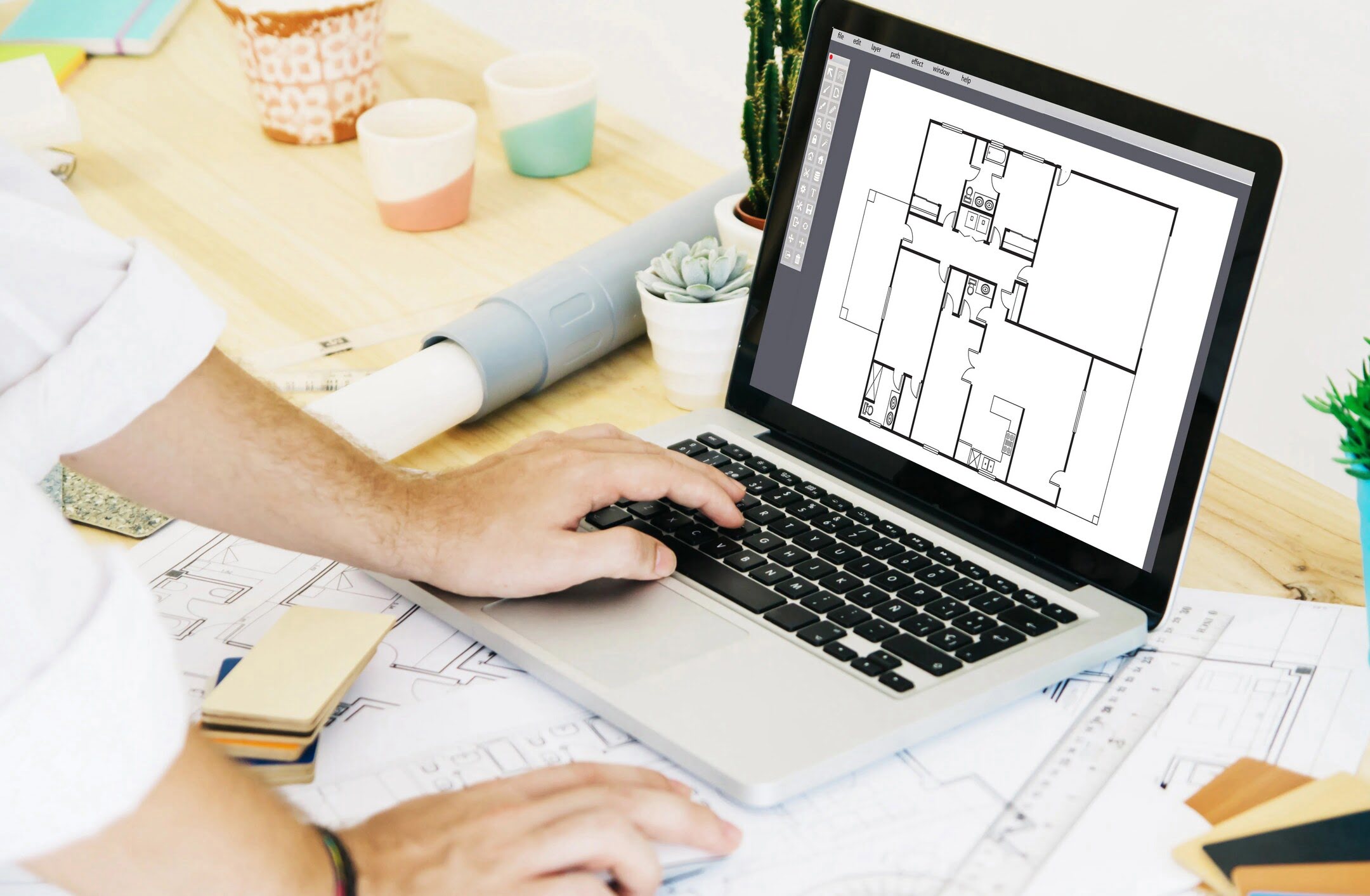Home>diy>Architecture & Design>How To Get A CAD Job


Architecture & Design
How To Get A CAD Job
Modified: December 7, 2023
Looking to land a CAD job in architecture design? Learn the essential skills and strategies to secure your dream role in this competitive industry.
(Many of the links in this article redirect to a specific reviewed product. Your purchase of these products through affiliate links helps to generate commission for Storables.com, at no extra cost. Learn more)
Introduction
Are you passionate about design and have a knack for bringing ideas to life through digital drawings? If so, pursuing a career in Computer-Aided Design (CAD) might be the perfect fit for you. CAD professionals play a crucial role in various industries, from architecture and engineering to manufacturing and product design. With their expertise in using CAD software, they create precise and detailed technical drawings that serve as the foundation for the creation of buildings, products, and structures.
However, breaking into the field of CAD can be a daunting task if you are unsure of where to start. The good news is that with the right strategy and preparation, you can land a rewarding CAD job that allows you to showcase your skills and contribute to innovative projects.
In this article, we will guide you through the steps to secure a CAD job. Whether you are a recent graduate or a professional looking to transition into the field, these steps will help you navigate the competitive job market and increase your chances of success.
Before we dive into the details, it’s important to note that CAD encompasses a wide range of disciplines, and each industry may require specific skills and software expertise. By determining your preferred CAD specialization, you can focus your efforts on gaining the education and experience necessary for your desired career path.
Key Takeaways:
- Specialize in a specific area of CAD, such as architectural, mechanical, electrical, or product design, to focus your efforts on gaining the necessary education and training for your desired career path.
- Building a strong CAD portfolio, networking with industry professionals, and strategically applying for job opportunities are crucial steps in securing a rewarding career in Computer-Aided Design.
Read more: What Jobs Use CAD
Step 1: Determine Your CAD Specialization
The first step in securing a CAD job is to determine your CAD specialization. CAD is a broad field with different applications in various industries, such as architecture, engineering, interior design, manufacturing, and more. Each of these industries may require different skill sets and software proficiencies.
Take some time to research and explore the different CAD specializations to find the one that aligns with your interests and strengths. Consider factors such as the industry you are passionate about, the type of projects you want to work on, and the software tools commonly used in that field.
Here are a few popular CAD specializations to help you get started:
- Architectural CAD: If you have a keen eye for design and enjoy working on building structures, architectural CAD may be the right specialization for you. In this field, you will work on creating detailed floor plans, elevations, and 3D models of buildings using software like AutoCAD, Revit, or SketchUp.
- Mechanical CAD: If you have an aptitude for mechanics and enjoy designing machinery and mechanical components, consider specializing in mechanical CAD. This field often utilizes software like SolidWorks, Inventor, or CATIA to create precise and complex 3D models of parts and assemblies.
- Electrical CAD: Electrical CAD professionals focus on the design and layout of electrical systems in buildings and industrial settings. They use software like AutoCAD Electrical or EPLAN to create wiring diagrams, panel layouts, and other electrical documentation.
- Product Design CAD: If you are fascinated by product development and enjoy bringing innovative ideas to life, product design CAD might be the right path for you. This specialization involves using software tools like SolidWorks or Rhino to create detailed 3D models of products, considering factors such as aesthetics, functionality, and manufacturability.
Remember, this is just a snapshot of the various CAD specializations available. Take your time to research and explore other options that align with your interests and goals. Once you have determined your CAD specialization, you can move on to the next step of acquiring the relevant education and training.
Step 2: Acquire the Relevant Education and Training
Once you have identified your CAD specialization, the next step is to acquire the relevant education and training in that field. Having a solid educational foundation and hands-on experience with CAD software is essential to stand out in the competitive job market.
Here are some steps to help you acquire the necessary education and training:
- Research CAD Programs: Look for accredited educational institutions that offer CAD programs specific to your chosen specialization. Consider factors such as program curriculum, reputation of the institution, and opportunities for hands-on learning.
- Earn a Degree or Certification: Pursue a degree or certification in CAD to gain a comprehensive understanding of the principles and practices in your chosen specialization. Some common degree options include an Associate’s or Bachelor’s degree in CAD, Engineering, or a related field.
- Attend Workshops and Training Courses: Supplement your formal education with workshops and training courses offered by industry professionals or software vendors. These can provide hands-on experience with specific CAD software tools and help you stay updated with the latest advancements in the field.
- Build a Solid Portfolio: As you acquire education and training, focus on building a strong portfolio that showcases your CAD skills and projects. Include a variety of work samples that highlight different aspects of your chosen specialization, such as 2D drawings, 3D models, and technical documentation.
- Gain Practical Experience: Consider internships, co-op programs, or entry-level positions that allow you to gain practical experience in your chosen CAD specialization. Real-world projects and collaborations will not only enhance your skills but also serve as valuable additions to your portfolio.
Remember, CAD software is constantly evolving, so it’s important to stay updated with the latest trends and developments in your chosen specialization. This may involve attending industry conferences, participating in online forums, or engaging in continuous learning through online tutorials and resources.
By acquiring the relevant education and training, you will enhance your CAD skills and knowledge, making yourself more attractive to potential employers and increasing your chances of securing a CAD job in your desired specialization.
Step 3: Build a Strong CAD Portfolio
Building a strong CAD portfolio is an essential step in securing a CAD job. A portfolio not only demonstrates your skills and expertise, but it also showcases your creativity, attention to detail, and ability to deliver high-quality CAD work.
Here are key steps to help you build a strong CAD portfolio:
- Select Your Best Work: Carefully select your best CAD projects to include in your portfolio. Choose a variety of projects that highlight different aspects of your skills and abilities. This could include 2D drawings, 3D models, renderings, technical documentation, or any other relevant work samples.
- Showcase Different Abilities: Demonstrate your versatility by including projects that showcase different CAD software tools and techniques. For example, if you specialize in architectural CAD, include examples of floor plans, elevations, and 3D models created using software like AutoCAD or Revit.
- Include Real-World Projects: If possible, include examples of CAD work you have done for real-world projects or clients. This could be from internships, freelance work, or any other professional experience. Real-world projects provide tangible evidence of your ability to deliver practical solutions.
- Create Detailed Descriptions: Accompany each project in your portfolio with detailed descriptions that highlight the objectives, challenges, and your role in the project. Explain the software tools used, design methodologies applied, and any unique features or considerations you incorporated into your work.
- Focus on Quality over Quantity: It’s not about how many projects you include, but rather the quality of the work showcased in your portfolio. Select a few high-quality projects that truly illustrate your skills and attention to detail.
- Present Your Work Professionally: Make sure your portfolio looks visually appealing and well-organized. Use clear and concise labeling, professional formatting, and consistent presentation throughout. Remember that your portfolio is a reflection of your professionalism and attention to detail.
In addition to a digital portfolio, consider creating a website or online portfolio platform to showcase your CAD work. This provides potential employers with easy access to your portfolio and demonstrates your ability to utilize digital technologies for presentation purposes.
Regularly update your portfolio as you complete new projects or acquire additional skills. As you gain more experience and expertise, your portfolio will evolve and become an even stronger representation of your CAD capabilities.
A well-curated and professionally presented CAD portfolio is crucial for catching the attention of employers and securing a CAD job. It allows them to assess your skills, creativity, and compatibility with their organization, making it a powerful tool in your job search.
Step 4: Network and Build Professional Relationships
Networking and building professional relationships are key steps in securing a CAD job. In today’s competitive job market, who you know can often be just as important as what you know. Building a strong professional network can open doors to job opportunities, provide valuable industry insights, and help you stay informed about the latest trends and developments in the field.
Here are some strategies to help you network and build professional relationships:
- Attend Industry Events and Conferences: Make an effort to attend industry events, conferences, and trade shows related to your CAD specialization. These events provide a platform to meet and connect with industry professionals, potential employers, and fellow CAD enthusiasts. Engage in conversations, ask questions, and exchange contact information to maintain connections.
- Join Professional Associations or Groups: Consider joining professional associations or online groups dedicated to CAD professionals in your chosen specialization. These communities allow you to connect with like-minded individuals, share industry insights, and gain access to job boards or exclusive opportunities.
- Utilize Social Media: Leverage social media platforms like LinkedIn, Twitter, and professional forums to connect with professionals in the CAD industry. Join relevant groups, participate in discussions, and share your expertise through posts and articles. Engage with others by commenting on their posts and sharing valuable insights.
- Participate in CAD Challenges or Contests: Engage in CAD challenges or contests organized by companies or industry publications. These can help you showcase your skills, gain exposure, and connect with industry professionals. Even if you don’t win, the experience and visibility can still prove beneficial in building your network.
- Reach Out to Alumni and Mentors: Connect with alumni from your educational institution or professionals who have experience in your chosen CAD specialization. Seek advice, ask for guidance, or inquire about potential job opportunities. Building relationships with mentors can provide valuable insights and guidance as you navigate your career.
- Attend Career Fairs: Attend career fairs or job fairs specifically focused on the CAD industry. These events allow you to interact directly with potential employers, learn about job openings, and make a memorable impression. Be prepared with copies of your resume and your portfolio to leave a lasting impact.
Networking is not just about getting job leads; it is about building meaningful relationships with professionals who can support and guide you throughout your career. Make an effort to maintain these connections by reaching out periodically, offering assistance, and sharing industry updates.
Remember, networking is a two-way street. Be genuine, listen actively, and offer help when you can. Building a strong network takes time and effort, but the connections you make can be invaluable throughout your career.
Networking is key to getting a CAD job. Attend industry events, join professional organizations, and connect with professionals on LinkedIn to increase your chances of finding job opportunities.
Read more: How To Get Into Woodworking As A Job
Step 5: Apply for CAD Job Opportunities
Once you have acquired the necessary education, built a strong portfolio, and established a professional network, it’s time to actively apply for CAD job opportunities. This step requires a strategic and proactive approach to maximize your chances of landing your desired CAD job.
Here’s how you can effectively apply for CAD job opportunities:
- Research Potential Employers: Take the time to research companies and organizations that align with your CAD specialization and career goals. Identify companies that are known for employing CAD professionals or have a history of working on projects in your field of interest.
- Customize Your Resume and Cover Letter: Tailor your resume and cover letter to each job application. Highlight relevant skills, experiences, and projects that demonstrate your suitability for the specific position. Be concise, use industry-specific terminology, and emphasize your accomplishments related to CAD.
- Utilize Online Job Boards and CAD-Specific Platforms: Explore online job boards and platforms that cater specifically to CAD professionals. These platforms often have job listings targeted towards CAD positions. Set up job alerts, regularly check for new opportunities, and complete your profile to attract potential employers.
- Network for Hidden Opportunities: Leverage your professional network to uncover hidden job opportunities. Inform your connections that you are actively seeking a CAD job and inquire if they are aware of any openings or upcoming projects. Stay engaged with industry professionals and attend networking events to stay informed about potential opportunities.
- Follow Application Instructions: Pay close attention to the application instructions in each job posting. Submit your application in the requested format, include all required documents or samples, and address any specific requirements or qualifications mentioned in the job description. Attention to detail can make your application stand out.
- Prepare an Impressive Online Presence: Ensure that your online presence, including your LinkedIn profile and any personal websites or portfolios, is up-to-date and showcases your CAD skills and experiences. Hiring managers often review candidates’ online presence, so make sure it aligns with your professional image and highlights your qualifications.
- Follow Up on Applications: After submitting your application, consider following up with a polite email or phone call to express your continued interest in the position. This can demonstrate your enthusiasm and proactive approach to potential employers.
Remember, the CAD job market can be competitive, so it’s important to remain persistent and flexible. Be open to considering entry-level positions, internships, or freelance opportunities to gain experience and build your reputation in the industry.
Additionally, it’s important to manage your expectations during the application process. You may not receive positive responses from every application, but each rejection can provide valuable feedback and insights to further refine your approach.
By actively applying for CAD job opportunities and adopting a proactive mindset, you maximize your chances of finding the right job that aligns with your CAD specialization and career aspirations.
Step 6: Prepare for CAD Job Interviews
Once you have successfully applied for CAD job opportunities and secured interviews, it’s time to prepare thoroughly to make a positive impression on potential employers. Preparation is key to showcasing your CAD skills, demonstrating your knowledge, and conveying your suitability for the job. Here are some essential steps to help you prepare for CAD job interviews:
- Research the Company: Familiarize yourself with the company you have an interview with. Understand their mission, values, recent projects, and any relevant industry news. This knowledge will not only impress the interviewer but also help you tailor your answers to align with their specific needs and objectives.
- Refresh Your CAD Skills: Brush up on your CAD skills to ensure you are up-to-date and confident with the software tools and techniques relevant to your chosen specialization. Review key commands, practice creating 2D drawings or 3D models, and be prepared to showcase your abilities during the interview if required.
- Prepare for Technical Questions: Expect to be asked technical questions related to CAD and your chosen specialization. Be prepared to explain your design process, problem-solving skills, and how you overcome challenges using CAD software. Practice answering common technical questions to ensure you can articulate your knowledge effectively.
- Review Your Portfolio: Take the time to review your CAD portfolio and familiarize yourself with the projects you have included. Be ready to discuss the specific details of each project, the software tools used, the challenges you faced, and the steps you took to overcome them. Prepare to explain your design decisions and highlight the outcomes and impact of your work.
- Anticipate Behavioral Questions: In addition to technical questions, be prepared for behavioral questions that assess your problem-solving skills, ability to work in a team, and your attitude towards challenges. Practice answering questions that require you to provide examples of your past experiences, projects, and accomplishments.
- Prepare Questions to Ask: Have a list of thoughtful questions prepared to ask the interviewer. This shows your interest in the role and company, and it allows you to gather valuable information about the position, team dynamics, and future opportunities. Ask about the company’s CAD workflows, preferred software tools, and any potential projects you may be involved in.
- Dress Professionally and Arrive on Time: Dress appropriately for the interview, opting for professional attire. Plan your route and ensure you arrive on time, or even a few minutes early. Punctuality and a well-groomed appearance contribute to making a positive first impression.
Lastly, practice good interview etiquette by making eye contact, listening actively, and maintaining a positive attitude. Be confident in showcasing your CAD skills and justify your design choices with clarity and conviction.
Remember, interview preparation takes time and effort, but it significantly increases your chances of success. The more prepared and confident you are, the more likely you are to impress the interviewer and secure the CAD job you desire.
Step 7: Negotiate and Accept a CAD Job Offer
Congratulations! You have made it through the interview process and have received a CAD job offer. Now it’s time to negotiate the terms and conditions of the offer before accepting it. Negotiating can help ensure that you receive fair compensation and benefits that align with your skills and experience. Here are some steps to help you navigate the negotiation process:
- Review the Job Offer: Carefully review the job offer, including the salary, benefits, work hours, and any additional perks or incentives. Understand the scope of the role, expectations, and the potential for growth within the organization. Identify any areas where you would like to negotiate.
- Research Salary Range: Research the average salary range for similar CAD positions in your area and industry. This information will provide you with a benchmark to better assess the offer. Consider factors such as your qualifications, experience, and the company’s size and reputation when evaluating the offer.
- Compile a List of Key Points: Prepare a list of key points to discuss during the negotiation. This could include desired salary, additional benefits, professional development opportunities, flexible work arrangements, or any specific concerns or requests you may have. Ensure that your requests are reasonable and align with industry standards.
- Schedule a Meeting: Reach out to the hiring manager or HR representative to schedule a meeting to discuss the offer. Express your gratitude for the opportunity and your excitement about joining the company. Let them know that you have a few points you would like to discuss before accepting the offer.
- Explain Your Value: During the negotiation meeting, clearly articulate your value proposition. Highlight your skills, experience, and how you can contribute to the organization’s success. Emphasize any unique qualifications or achievements that make you an asset to the company.
- Propose Your Points: Present your list of key points and the reasons behind each request. Be prepared to justify your desired salary or benefits with market research or examples of your past contributions. Be flexible and open to compromise, while standing your ground on the key items that matter most to you.
- Listen and Respond: Listen attentively to the employer’s response, taking note of any counteroffers or concerns they may raise. Respond thoughtfully and professionally, considering their perspective and offering solutions or alternatives if needed. Negotiations should be a collaborative process aimed at finding a mutually-beneficial agreement.
- Put the Agreement in Writing: Once an agreement is reached, ensure that the terms are clearly stated in writing. Request a revised offer letter or employment contract that reflects the negotiated terms. Review it thoroughly before signing to ensure that all agreed-upon points are included.
- Express Acceptance: Once you are satisfied with the agreed-upon terms and have reviewed and signed the revised offer letter or employment contract, express your acceptance of the job offer with gratitude and enthusiasm. Follow any additional steps outlined by the employer, such as completing paperwork or undergoing a background check.
Remember, negotiation is an opportunity to advocate for yourself and ensure that you are being fairly compensated for the value you bring to the organization. Approach the negotiation process professionally, respectfully, and with a collaborative mindset to achieve the best outcomes.
By effectively negotiating and accepting a CAD job offer, you can set yourself up for a successful and rewarding career in the field of Computer-Aided Design.
Conclusion
Securing a CAD job requires a combination of specialized skills, relevant education, a strong portfolio, networking, and effective job search strategies. By following the steps outlined in this guide, you can increase your chances of success and land the CAD job of your dreams.
Start by determining your CAD specialization based on your interests and strengths. This will help you focus your efforts on acquiring the relevant education and training specific to your chosen field. Building a strong CAD portfolio is essential to showcase your skills and expertise, so carefully select and curate your best work.
Networking and building professional relationships are crucial in the job market. Engage with industry professionals, attend events, and leverage social media platforms to connect with like-minded individuals and potential employers.
Once you identify job opportunities, apply strategically with customized resumes and cover letters. Utilize online job boards and platforms tailored to CAD professionals, and tap into your network for hidden opportunities.
Preparing for CAD job interviews is key to impressing potential employers. Research the company, refresh your CAD skills, and practice answering technical and behavioral questions. Dress professionally, arrive on time, and demonstrate your enthusiasm and confidence.
Finally, when you receive a CAD job offer, negotiate the terms and conditions to ensure a fair agreement. Research salary ranges, compile key negotiation points, and have a respectful and collaborative discussion with the employer. Once an agreement is reached, express your acceptance professionally and follow any additional steps outlined by the employer.
Securing a CAD job may take time and effort, but with determination and the right strategies, you can carve a fulfilling career in this exciting field. Stay proactive, continue learning and updating your skills, and never hesitate to seek opportunities that align with your passion and goals. Best of luck on your CAD job journey!
Frequently Asked Questions about How To Get A CAD Job
Was this page helpful?
At Storables.com, we guarantee accurate and reliable information. Our content, validated by Expert Board Contributors, is crafted following stringent Editorial Policies. We're committed to providing you with well-researched, expert-backed insights for all your informational needs.















0 thoughts on “How To Get A CAD Job”